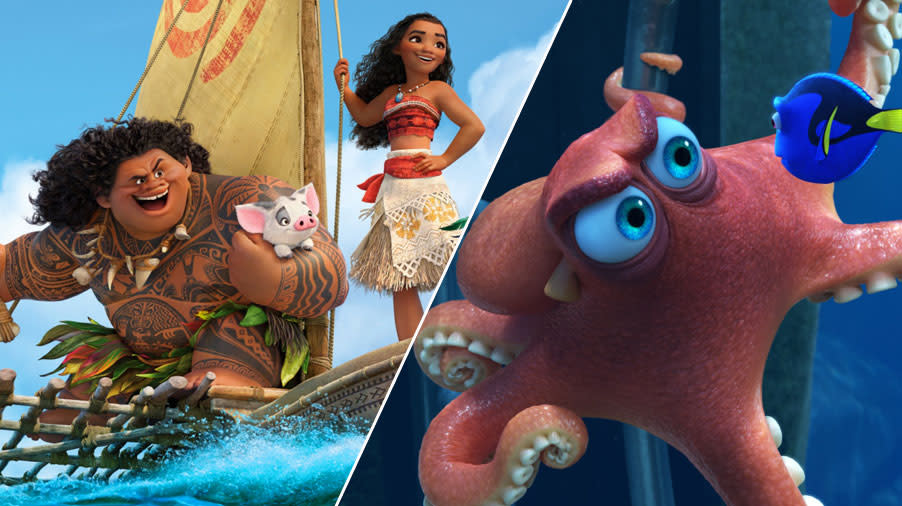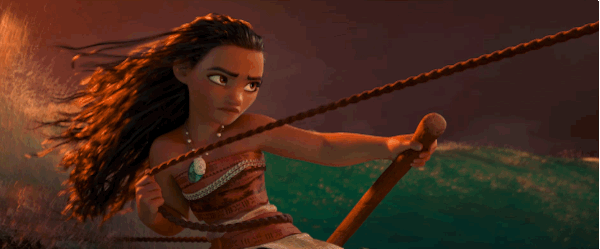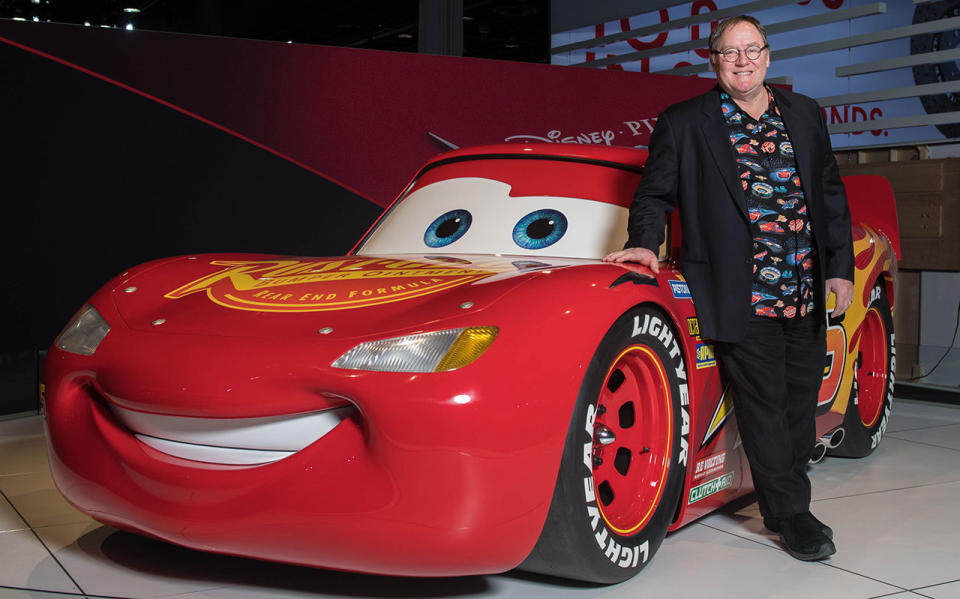Disney Animation Studios has finally overtaken Pixar

It’s time to face facts: Pixar, the pioneers of the 3D animation field and the former gold standard for animated movies in Hollywood, has been left behind by its House of Mouse stablemate Disney Animation Studios.
Pixar’s impeccable run of form from ‘Toy Story’ (1995) to ‘Toy Story 3’ (2010), has been tarnished in recent years by a number of slip-ups, and a dependence on sub-quality sequels, including ‘Cars 2’ (2011), ‘Brave’ (2012), ‘Monsters University’ (2013), and The Not So ‘Good Dinosaur’ (2015).
Meanwhile, their noisy sibling Disney Animation Studios has created a chasm in quality between the two of them, flooring Pixar with ‘Tangled’ (2010), ‘Frozen’ (2013), ‘Big Hero 6’ (2014), ‘Moana’ (2016), and ‘Zootropolis’ (2016). Quite frankly, they’re crushing them harder than the waste in Wall-E’s trash compactor.
Watch the magical new Beauty and the Beast trailer
Why 2016 was a landmark year for animation
5 weird Disney films we never got to see
In fact, you needn’t look further than this year’s Oscars to find evidence of Disney Animation Studios overtaking Pixar. ‘Moana’ and ‘Zootropolis’ are both up for Best Animated Feature, while Finding Dory has failed to gain a nomination. Cue the disappointed sighs of Blue Tang fish merchandisers.
But what is it exactly that Disney Animation Studios is doing right? And what is Pixar doing wrong?
For starters, there seems to be a huge difference in creative freedom between the two of them. Putting 2015’s superlative – and Oscar-winning – ‘Inside Out’ to one side as the exception to the rule, Pixar seems to be creatively running on empty, while Disney Animation Studios is benefitting from a total lack of limitations – hence the introduction of completely original titles like ‘Moana’ and ‘Zootropolis’.
But even when they don’t feel like building a whole new concept from the ground up, they also have the option to take from source material, like they did for ‘Big Hero 6’ (the Marvel comics), ‘Tangled’ (classic fairytale Rapunzel) and certain characters in ‘Wreck-It-Ralph’ (Sonic The Hedgehog, Pac-Man etc).
It means almost anything can come out of Disney Animation Studios, while Pixar’s insistence on creating original IP (intellectual property) and then iterating on it has led to an influx of numbered sequels. ‘Cars 3’, ‘The Incredibles 2’ and ‘Toy Story 4’ are all on their way, but where does it end?
In July 2016, Pixar president Jim Morris told Entertainment Weekly the studio had no more sequels in development beyond 2019’s ‘The Incredibles 2’, but the studio pipeline’s volte-face will take years to bear new original fruit, and by then it could be too little, too late for Pixar.
The studio will have their hopes pinned on ‘Coco’, its Day of the Dead-inspired story set for release later this year, but even that is being likened to Reel FX Creative Studios’ Guillermo Del Toro-produced ‘The Book of Life’ (2014), thanks to all the sugar skulls.

And this could point to another reason Disney Animation Studios is racing ahead of the animated pack: Pixar: obsession with doom and gloom. ‘Up’ set the tone with that emotionally wrenching opening, then we had ‘Toy Story 3’ with its holocaust allegory. More recently ‘Inside Out’ dealt with the complex matter of depression while ‘The Good Dinosaur’ was about grief, and now ‘Coco’ looks set to be a meditation on the afterlife.
It’s no wonder, in these darker days, that audiences are taking more fondly to the happiness and colourful shapes coming out of Disney Animation Studios. Films like ‘Moana’, with its catchy songs, silly sidekicks, and relatable protagonists have universal appeal across all demographics, with stories and messages that people of all ages can appreciate, and ‘Zootropolis’, the favourite to pick up Best Animated Feature at the Oscars, is a particularly interesting example.
While the younger viewer will be more than satisfied with the animal action and humour (a certain scene with a sloth in a vehicle registration office deserves a mention), there’s also the highly relevant subtext, relating to discrimination and prejudice, that an older audience are bound to acknowledge.

Pixar has struggled to find that balance between enjoyment and relatable content, pandering more towards the individual who is likely to understand complex concepts, like why tying balloons to your house might be a good idea. Of course, this isn’t to say that Disney Animation Studios will always be better than Pixar.
It’s almost certain that the latter will one day have a creative resurgence, especially with the differences between the two becoming increasingly ambiguous – Pixar’s Brain Trust (the group who give feedback to directors and screenwriters) and Disney’s Story Trust are run in similar ways.
It’s also unlikely that John Lassester, the chief creative office of both studios, will allow one to pull further away from the other. That could explain why the two have swapped approaches in the past, with Pixar releasing a fairy tale story in ‘Brave’, and Disney giving us a ‘what if’ concept in ‘Wreck-It-Ralph’.

But there’s no denying the current gulf in quality between the two studios. And while Disney endures this internal tug-of-war, other animation companies are gaining ground. Stop-motion giant Laika is Oscar-nominated for the visually stunning ‘Kubo and the Two Strings’, while the anime genre is as strong as ever, offering Studio Ghibli’s ‘The Red Turtle’ and Comix Wave Films’ ‘Your Name’.
The question is whether Disney can find a balance between their two studios to ensure they stay at the top. By the way, it’s worth mentioning that Disney experienced a creative slump in the 80s, but then came back with a few small projects called ‘The Little Mermaid’, ‘Beauty and the Beast’, ‘Aladdin’ and ‘The Lion King’, kicking off the so-called Disney Renaissance.
Can Pixar pull off a similar resurgence? If history’s taught us anything, it’s never write off the underdog.
Read more
The most popular Disney songs of all time
The man who took on Disney… and nearly won
Glaring mistakes in Disney movies

 Yahoo Movies
Yahoo Movies 
